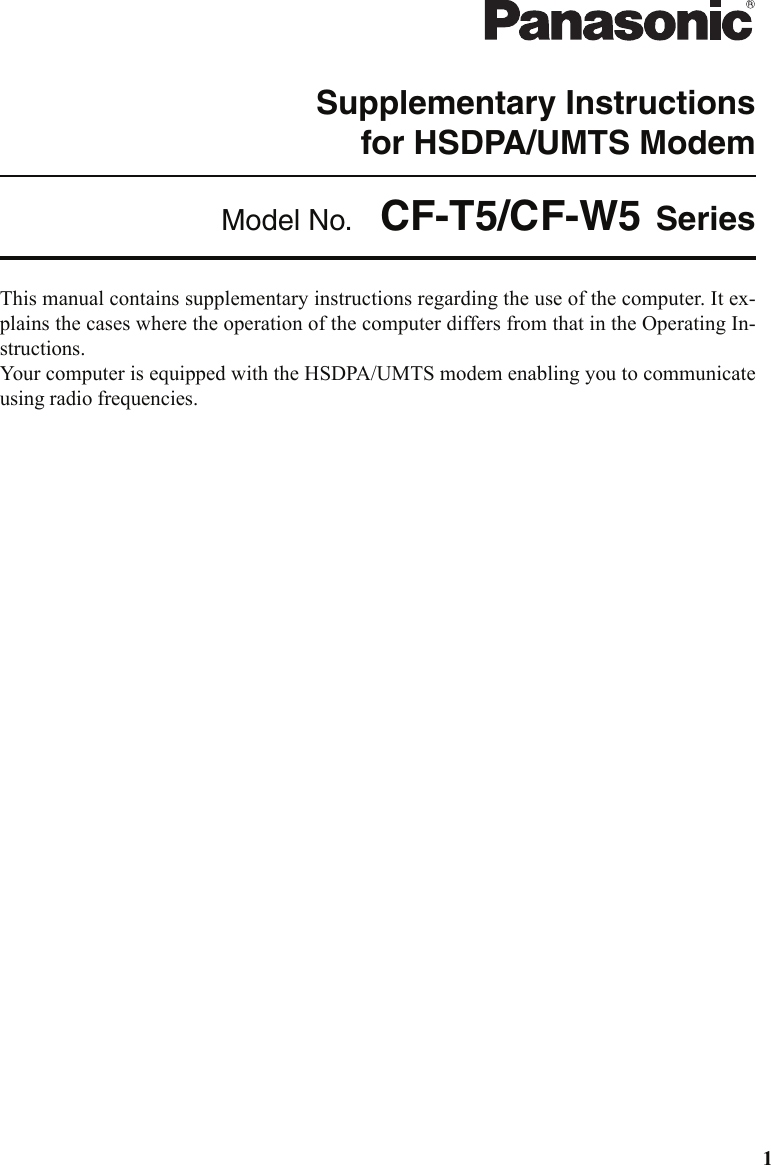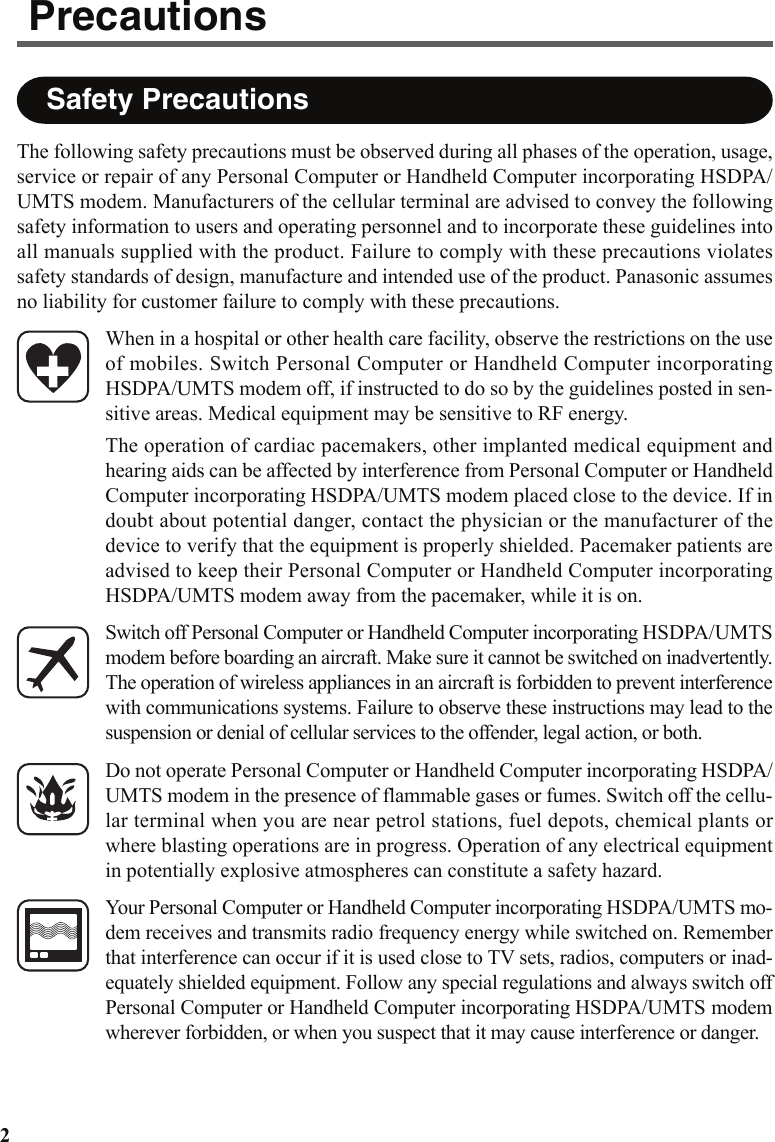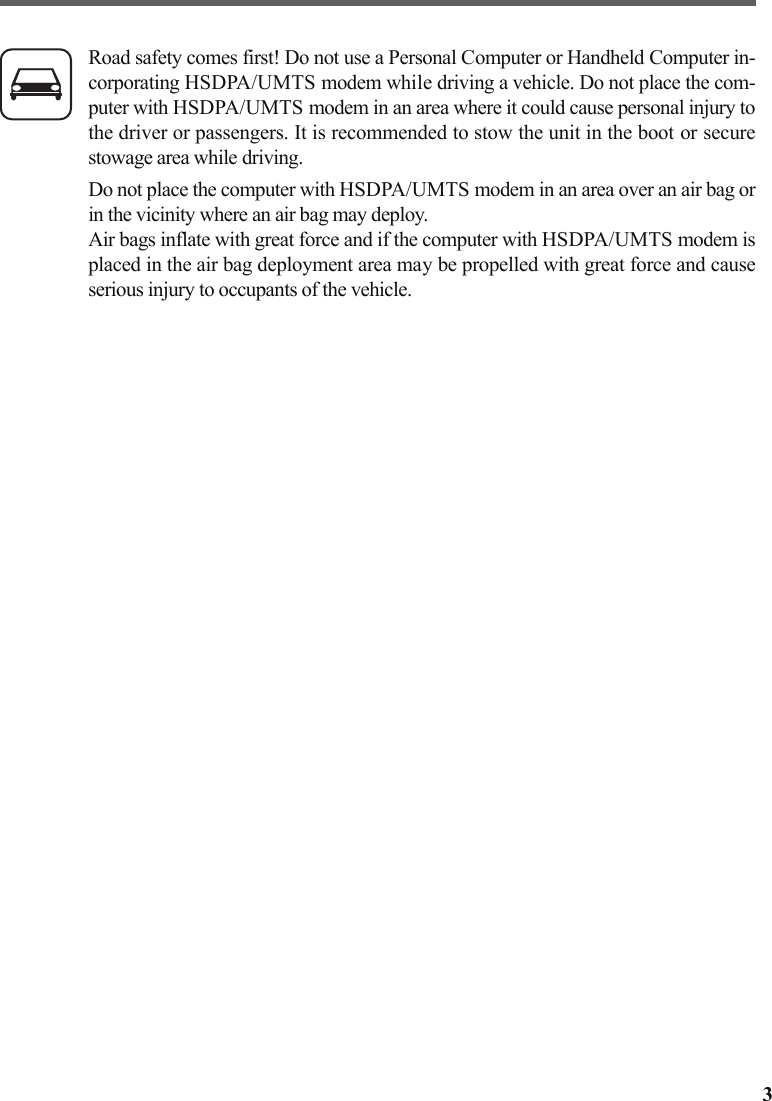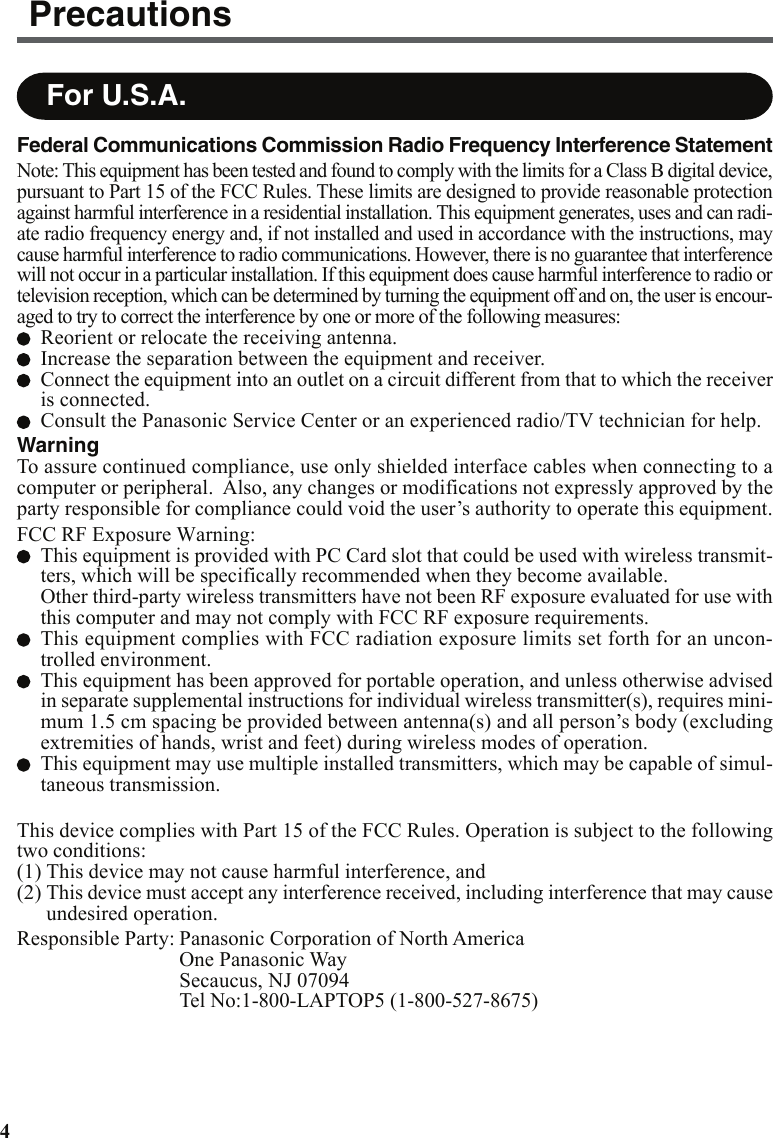Panasonic of North America 9TGCF-T52 CF-T5 Notebook Computer with WLAN(a+b+g) and HSDPA User Manual HSDPA p65
Panasonic Corporation of North America CF-T5 Notebook Computer with WLAN(a+b+g) and HSDPA HSDPA p65
Contents
- 1. User Manual CF T5
- 2. User Manual HSDPA
- 3. User Manual WLAN
- 4. User Manaul CF T5
User Manual HSDPA



